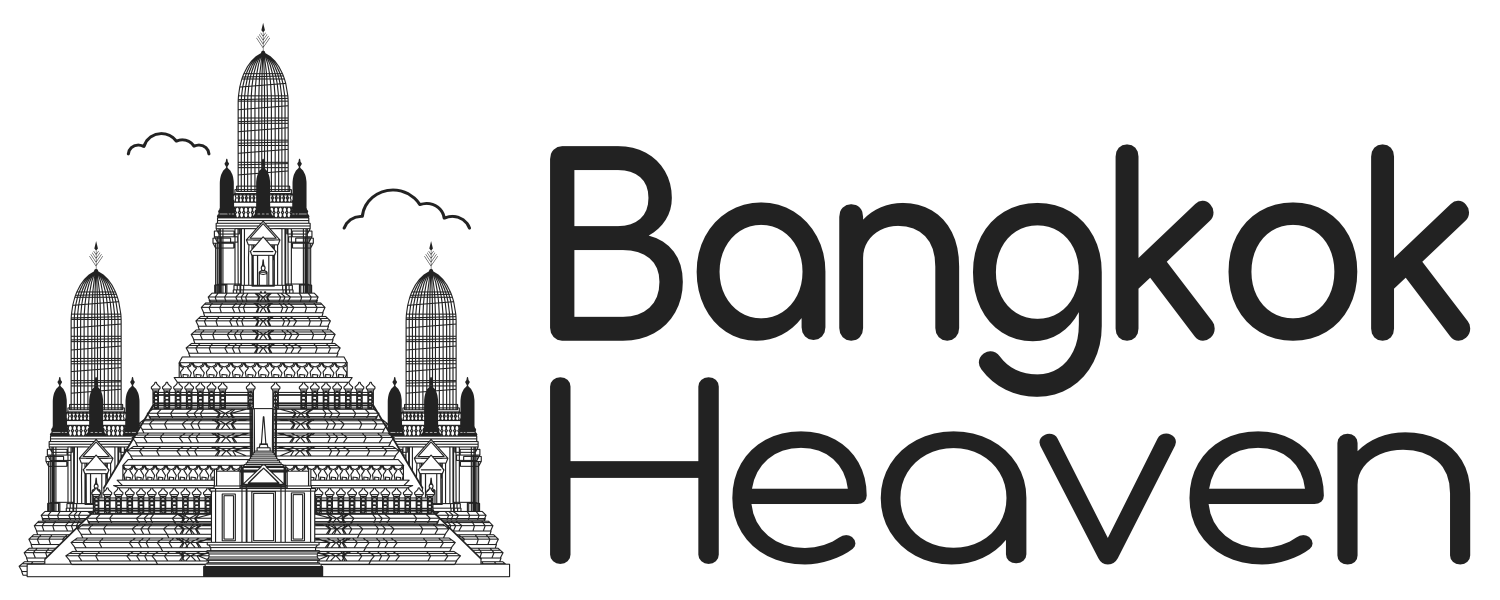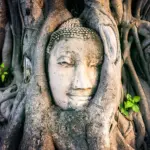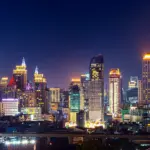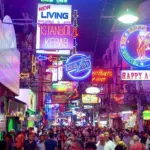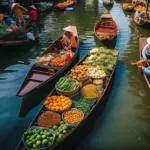The Historic City of Ayutthaya: A Journey Through Time
The Historic City of Ayutthaya, located about 80 kilometers north of Bangkok, is one of Thailand’s most significant historical sites and a UNESCO World Heritage Site since 1991. Established in 1350, Ayutthaya was the capital of the Siamese Kingdom for over 400 years, serving as a major hub of trade, culture, and politics in Southeast Asia. At its height, Ayutthaya was one of the world’s most cosmopolitan cities, hosting traders from Europe, the Middle East, India, and China. Today, the ruins of this once-thriving kingdom attract thousands of tourists and history enthusiasts, eager to explore its temples, palaces, and rich cultural history.
The Founding and Rise of Ayutthaya
Ayutthaya was founded in 1350 by King U Thong (also known as King Ramathibodi I), who sought to establish a new capital following the outbreak of a smallpox epidemic in Lopburi, the previous center of power. Strategically located on an island at the confluence of three rivers—the Chao Phraya, the Lopburi, and the Pa Sak—Ayutthaya quickly grew into a powerful political and economic center. Its location not only protected the city from seasonal floods but also made it an important trading hub, with easy access to the Gulf of Thailand and international maritime routes.
During its peak in the 16th and 17th centuries, Ayutthaya became a melting pot of cultures, with foreign traders from as far as Europe and the Middle East settling in the city. The Portuguese were among the first Europeans to arrive, followed by the Dutch, French, and British. As a result, the city developed a cosmopolitan character, reflected in its architecture, trade practices, and the diverse cultural influences that shaped its society.
Architectural Wonders
One of Ayutthaya’s most striking features is its stunning architecture, much of which is still visible today despite centuries of war and decay. The city’s temples (or wats) are characterized by their towering prangs (reliquary towers) and massive stupas, which reflect a unique blend of Khmer, Sukhothai, and Sri Lankan architectural styles. Many of these religious sites were built as grand monuments to the kings who commissioned them, serving both religious and political purposes.
Wat Phra Si Sanphet, located in the royal palace complex, was the grandest temple in Ayutthaya and the model for the famous Wat Phra Kaew in Bangkok. It was used exclusively by the royal family for religious ceremonies and housed a 16-meter-tall Buddha covered in gold, which was tragically destroyed during the Burmese invasion in 1767.
Wat Mahathat is another iconic temple, famous for the Buddha head entwined in the roots of a banyan tree. This image has become one of the most recognizable symbols of Ayutthaya and is often associated with the blend of nature and human creation that defines the city’s ruins today.
Wat Chaiwatthanaram, located on the western bank of the Chao Phraya River, offers one of the most photogenic sites in Ayutthaya. This grand temple was constructed in 1630 by King Prasat Thong to honor his mother, and it features a central prang surrounded by eight smaller chedis, all beautifully reflecting the influences of Khmer architecture.
Ayutthaya’s Role in International Trade
One of the key factors in Ayutthaya’s prosperity was its role as an international trading port. The city’s strategic position made it a crossroads for trade routes connecting China, India, Japan, Persia, and Europe. The Chao Phraya River served as a vital artery for transporting goods, and the city itself was a bustling marketplace where merchants from all corners of the world came to exchange goods, ideas, and culture.
European visitors to Ayutthaya were often struck by the grandeur and wealth of the city. The Dutch and French left detailed accounts of its thriving marketplaces, palaces adorned with gold, and bustling streets filled with people from diverse backgrounds. The foreign quarter of Ayutthaya, located outside the city walls, housed European, Chinese, Japanese, and Muslim traders, each contributing to the rich tapestry of Ayutthaya’s cultural life.
The Siamese kings were adept diplomats, managing to maintain strong relationships with foreign powers while protecting the kingdom’s sovereignty. This ensured a steady flow of wealth and influence into Ayutthaya, making it one of the most powerful kingdoms in Southeast Asia.
The Fall of Ayutthaya
Despite its strength, Ayutthaya’s glory came to an abrupt end in 1767 when it was sacked by the Burmese army. After a lengthy siege, the city was burned to the ground, and many of its treasures were looted. The destruction was so thorough that Ayutthaya was never rebuilt, and the Siamese capital was eventually moved to present-day Bangkok, where the new Rattanakosin Kingdom was established.
The fall of Ayutthaya marked the end of one of Southeast Asia’s most illustrious civilizations. However, many of the city’s ruins survived the destruction and stand today as a testament to its former grandeur. Visitors can still walk through the remnants of ancient temples, palaces, and statues, imagining the splendor that once defined this city.
Preservation and UNESCO Recognition
In 1991, the Historic City of Ayutthaya was designated a UNESCO World Heritage Site in recognition of its historical and cultural significance. Efforts have been made to preserve the ruins and protect them from further degradation, though challenges such as flooding and encroaching development continue to threaten the site.
UNESCO’s recognition of Ayutthaya highlights the importance of the city as a cultural crossroads and a symbol of the rich history of Thailand. Today, Ayutthaya is a major tourist destination, attracting visitors from around the world who come to explore its ruins, learn about its history, and experience the unique blend of Thai, Khmer, and foreign influences that shaped the city.
Exploring Ayutthaya Today
For modern visitors, Ayutthaya offers a fascinating glimpse into Thailand’s past. The city is easily accessible from Bangkok, with regular trains, buses, and even boat tours along the Chao Phraya River. Once in Ayutthaya, tourists can explore the ruins by bicycle, tuk-tuk, or on foot, taking in the grandeur of its temples and palaces.
The Ayutthaya Historical Park is the centerpiece of the city, encompassing many of the most famous ruins, including Wat Phra Si Sanphet and Wat Mahathat. Outside the park, visitors can also explore the floating market, enjoy boat tours along the rivers, or visit the many museums dedicated to the city’s history.
Conclusion
The Historic City of Ayutthaya remains a testament to the ingenuity, power, and cultural richness of the Siamese Kingdom. Despite its destruction over 250 years ago, Ayutthaya continues to inspire awe with its majestic ruins, architectural marvels, and storied past. For anyone interested in history, culture, and the legacy of ancient civilizations, a visit to Ayutthaya is a must when traveling through Thailand. The city’s ruins not only offer a window into Thailand’s past but also a reminder of the resilience and enduring spirit of its people.
